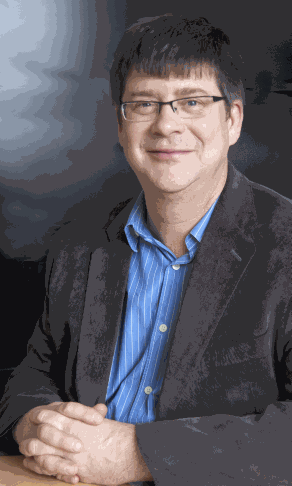“Seminal contributions to x-ray microscopy” have earned Chris Jacobsen election to Fellowship in the American Physical Society (APS). Jacobsen is the Associate Division Director for Imaging and Microscopy in the X-ray Science Division (XSD) at the Advanced Photon Source at Argonne National Laboratory, as well as a Professor in Physics & Astronomy at Northwestern University. He was nominated for APS Fellowship by the Topical Group on Instrument and Measurement Science, and elected by the APS Council at its November 2011 meeting.
“We are lucky to have a scientist of Chris's broad accomplishments in the X-ray Science Division since March 2010.His expertise and mentorship of young scientists will be critical for the APS Upgrade project as we expand our efforts in imaging and microscopy to the in situ and timing world,” said Linda Young, Director of the X-ray Science Division.
Jacobsen received his B.A. in physics, cum laude, from St. Olaf College in 1983; and his Ph.D.in physics from Stony Brook University in 1988.
After spending a year as a postdoc at the Center for X-ray Optics at Lawrence Berkeley Laboratory, and another at Stony Brook, Jacobsen joined the Stony Brook faculty, where he rose to Professor in the Department of Physics & Astronomy. In 2010, he came to Argonne as XSD Associate Division Director and as a Senior Physicist.
Jacobsen’s wide range of research interests is clear. He has been involved in developing x-ray microscopy methods and applications in biological and environmental since his Ph.D. project, and has pursued projects in x-ray holography and scanning microscopy. He is currently working with coherent diffraction and phase-contrast imaging, x-ray fluorescence, and tomography.
“I’ve always been interested in developing things at the frontier,” Jacobsen said recently, “and trying to bring them to positive fruition. That has involved a lot of instrumentation development and computation, which I began at Stony Brook. Then, as instrumentation became more sophisticated, I came to Argonne and Northwestern to work in partnership with a strong group of scientists in x-ray imaging.
“I have also had the pleasure of training a number of students, many of whom have gone on to do well as staff members at a number of facilities including the APS. Early in my time at Stony Brook, I did much of this in collaboration with Janos Kirz, who was a Professor there, though in the past 10 years he had a series of other responsibilities including being Director of the Advanced Light Source [at Lawrence Berkeley National Laboratory].”
Jacobsen’s students have earned numerous awards, including the two winners of the Werner Meyer-Ilse Award for best student at the International X-ray Microscopy Conference; two Distinguished Doctoral Dissertation Awards from Stony Brook University; the Julian Baumert Award for best Ph.D. dissertation at the National Synchrotron Light Source; and three Gertrude Scharf-Goldhaber Awards for best female physics Ph.D. student at Stony Brook University or Brookhaven National Laboratory.
Jacobsen has been awarded a Presidential Faculty Fellow Award by the White House/National Science Foundation in 1992—1997; the 1996 International Dennis Gabor Award from Hungary, for his work in modern optics before age 35; the Kurt Heinrich Award as an outstanding young scientist, from the Microbeam Analysis Society, in 2001. He also shared in a 1999 R&D 100 award for the 100 most technologically significant new products and processes of the year, for co-development of the cryo-scanning transmission x-ray microscope. He is a Fellow of the Optical Society of America; the American Association for the Advancement of Science, and now the American Physical Society.
Election to Fellowship of the American Physical Society is limited to no more than one-half of one percent of the American Physical Society membership, and is “recognition by your peers of your outstanding contributions to physics,” according the society.
The Advanced Photon Source at Argonne National Laboratory is one of five national synchrotron radiation light sources supported by the U.S. Department of Energy’s Office of Science to carry out applied and basic research to understand, predict, and ultimately control matter and energy at the electronic, atomic, and molecular levels, provide the foundations for new energy technologies, and support DOE missions in energy, environment, and national security. To learn more about the Office of Science x-ray user facilities, visit http://science.energy.gov/user-facilities/basic-energy-sciences/.
Argonne National Laboratory seeks solutions to pressing national problems in science and technology. The nation's first national laboratory, Argonne conducts leading-edge basic and applied scientific research in virtually every scientific discipline. Argonne researchers work closely with researchers from hundreds of companies, universities, and federal, state and municipal agencies to help them solve their specific problems, advance America's scientific leadership and prepare the nation for a better future. With employees from more than 60 nations, Argonne is managed by UChicago Argonne, LLC for the U.S. Department of Energy's Office of Science.

